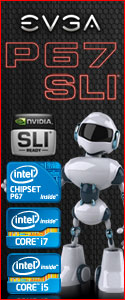All test results were performed in an open air environment with an ambient temperature of 72° Fahrenheit (22c). For the purpose of this review we will compare the FrioOCK to the stock Intel cooler with a copper base, the Thermaltake Frio (single and dual fan configurations) and the Thermaltake Jing.. Innovation Cooling Diamond thermal paste was used on all coolers, our favorite! We will attempt a solid 1 GHz overclock from the stock 3.06 GHz speed of the i3 540. Idle temps were recorded after 30 minutes, and load temps were recorded after a 20 pass run of LinX stress test. Each test was run with all fans set to their highest RPM value to illustrate the maximum cooling potential of each CPU cooler. We used RealTemp 3.40 to monitor the temperatures, and the highest reading from all cores was used for the results.
The following components were used in the test bed:
- Gigabyte GA-H55M-UD2H
- G.Skill 2X2 Gb Trident DDR3-2000
- Corsair 750 Watt PSU
- Intel i3 540 CPU
- WD 500 Gb Sata HDD
- Lite-On Sata DVDRW
The first testing was performed at stock speeds and voltages. There was not a lot of difference between any of the coolers except for the stock Intel cooler, which was expected.
Next we performed a small overclock to 3.5Ghz. At this speed the FrioOCK begins to put a little distance between it and the other coolers.
Pushing the envelope a tad farther, we jumped the system to 3.8Ghz. Surprisingly the original Frio with a dual fan configuration actually closed the gap a bit here, but was still behind the FrioOCK.
Finally we pushed the CPU to a solid 1Ghz overclock, which landed us at 4.07Ghz and 1.23v. The FrioOCK stretched it’s margin of victory again, but the Frio and Jing continued to hold their own as well.
Other than the Intel cooler, all the others performed nicely. The FrioOCK showed tremendous cooling ability and is a definite improvement over the original Frio. Granted, these tests were performed in an open air environment which will yield better results than a system sitting inside of a case, but none the less the results are impressive for an air cooler.





 Posted in
Posted in 






